The Lidice Memorial
The town of Lidice in Spring 1942 (pronounced liditser), 20km north west of Prague, was an example of a regular Czech village. Church, school, couple of farms, population a little over 500.
It was of no strategic consequence in the second world war. For many Czechs, life went on as normal apart from the occasional presence of German soldiers. On May 27th 1942 Reinhard Heydrich, the German Reichsprotektor of Bohemia and Moravia, survived an assassination attempt when two soldiers were parachuted into the country and set off a bomb in his car (Jan Kubiš was Czech and Jozef Gabčik was born in what is now Slovakia). You can read about that on the Operation Anthropoid page, Lidice was a consequence.

Ironically, horse hair in the car seat that lodged in his body during the explosion may have caused blood poisoning that eventually killed him. A link was known between the Czech resistance and Lidice. On June 4th, village resident Stanislav Horak and his wife were arrested. On June 8th 1942, the German army returned to the village of Lidice and began burning it. On the evening of June 9th the men were separated from the women and children and the next day, the Germans rounded up 173 men into a place called Horak’s Farm and shot them. The women and children were sent to the Ravensbrook concentration camp and the village was destroyed.
Lidice Memorial – Memorial Path
This is the area that used to be the location of the village. The area of the old village has become a memorial to the events of June 1942. If you follow road signs, you arrive in the village at the “Lidice Gallery” which I’ll talk about later. What you need to know at this point is this is the place to get your free map showing the different monuments.
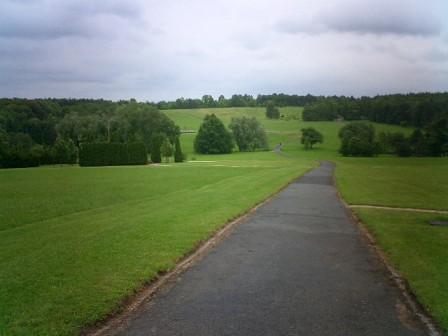
Lidice Memorial – June 10th Street
The long straight tree lined road linking the Gallery with the main memorial is called “10 Cervna 1942” when the destruction of the village was completed. Both sides are lined with houses originally built for the survivors on their return from the concentration camp. We stayed to the left of the road until we arrived at the location of the main memorial structure.
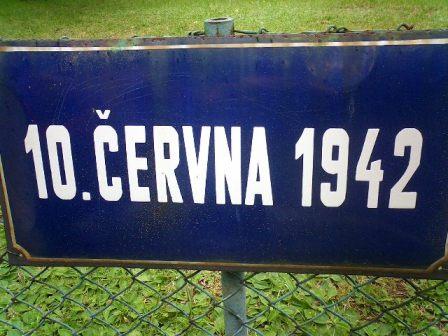
Lidice Memorial – Colonnade
There is a colonnade with an “eternal flame” at the centre (lit on red-letter days only). On both sides of the centre arch are some sandstone reliefs known as the “Cycle of Lidice”. From the left it details the separation of the men from their families, their murder and the following separation of the children from their mothers. On the right side, the reliefs show the liberation of the Ravensbrook concentration camp by Russian forces, the return of the survivors to Lidice and the slow adaptation to normal life.
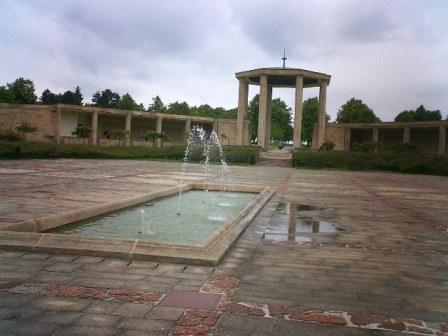
Lidice Memorial – Gunned Down
The picture shows a small portion of the second relief on the left. The village men, first machine gunned and then finished off by pistol.
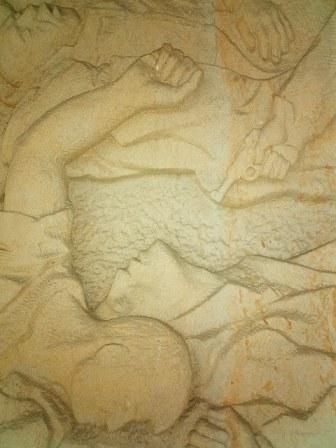
Lidice Memorial – The Children
Leaving the main monument area, you walk past the fountain (the Museum is on the left) to the far end of the terrace and walk down some steps. This is the location of the “In Memoriam” hall in which you’ll find some old photos of the village and a study of other places that suffered a similar fate. You continue down the path and you will be drawn over to the right to a monument only installed in the year 2000. It is the monument to the Lidice children and more specifically the 82 children who never returned.
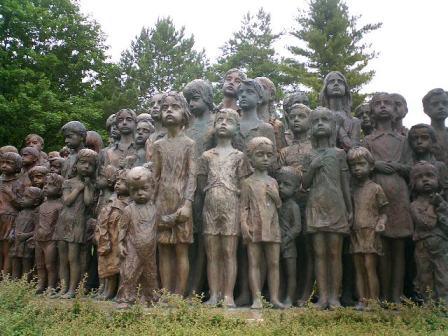
Lidice Memorial – The Children in Close-up
A close picture from the side. It’s a gripping sculpture. 82 faces that seem to follow you around. The sculpture overlooks the site of the village.
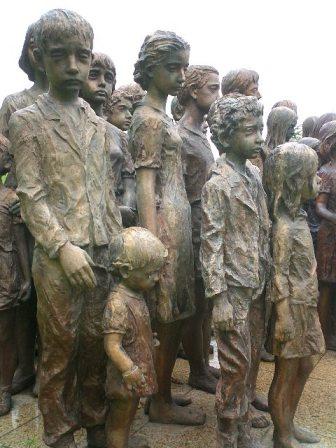
Lidice Memorial – The Children’s Toys
People still leave flowers and small toys at the base of the sculpture. It’s tough to explain to a 7 year old why they are there.
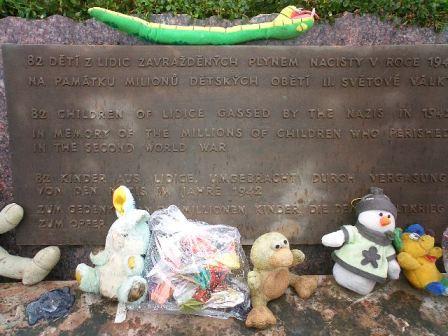
Lidice Memorial – Horaks Farm
Leaving the children’s memorial, we walked back over to the original path and turned right. We now arrive at two very different monuments. On the right is the remains of Horak’s Farm (pictured) at which the 173 men were shot and on the left is the small garden with the cross. This is the mass grave of the Lidice men.
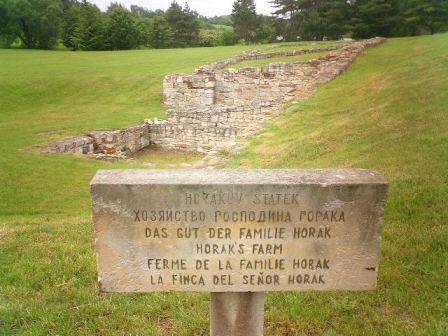
Lidice Memorial – Crying Woman
As you walk further down the path, you eventually arrive at what seems to be building foundations. The nearest foundations and floor is that of the village church. It was burned down and the walls destroyed by explosives. The priest was one of the men executed at Horaks Farm. The ruins of the school are located behind the church. It was a two storey building and would have been one of the largest in the village. It too was destroyed by explosives but, not before it was used to house the women and children on their way to being taken from the village on the evening of June 9th. The school has two sculptures overlooking it. The “Crying Woman” is closest to you and the “Lidice Mother” is further away. The picture shows the “Lidice Mother” created in 1957.
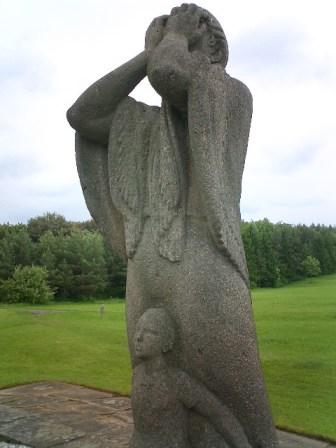
Lidice Memorial – Rose Garden
At the end of the path are two cemeteries. The one on the left without an enclosed wall and with the crosses is the old cemetery. The destruction of the village also included the levelling of the cemetery. Bodies were pulled from coffins and valuable goods removed from them. Gravestones were broken up and used as foundation for army buildings. On the way back up the path you come back to the childrens’ memorial and if you stay to the left, the path goes up to the “Garden of Friendship and Peace”, it’s a huge rose garden. The original was planted in 1955 and it was maintained until 1989. After this it was left unkempt until 2001 when the Ministry of Culture stepped in with funding to renovate the whole Memorial in time for the 60th anniversary. The rose garden you see now was part of that 2001-2002 renovation. If you enter the garden via the path from the childrens’ memorial, the first thing you’ll see is a set of shields. Each of the shields is from a town or city that suffered almost complete destruction. These include, Hiroshima, Nagasaki, Dresden and Coventry amongst others.
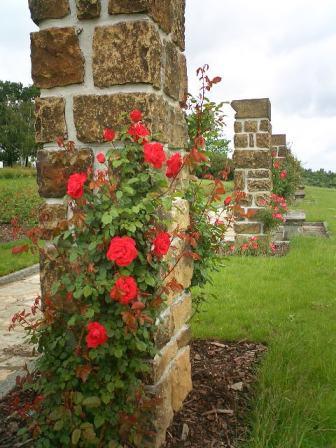
There are a couple of other small monuments on the way through the garden including the “Peace fountain” in the rose garden and at the far end of the street outside the Gallery you’ll see a man preparing to beat a three headed snake. The gallery has a small cinema on the first floor which shows film in English, German and Czech. The black and white film and photos are graphic and not suitable for young children. Each year around this time, the gallery hosts the International Childrens Exhibition of Fine Arts. 2005 was the 33rd exhibition.
More than 26 countries were represented in the competition form ages 6 to 16. As well as entries from the Czech Republic and Slovakia, there were also areas from Turkey, Croatia, Turkmenistan, Afghanistan and Spain to name a few.
It was the first time I’d been here and it was not what I was expecting. For one thing, the wide open grassed areas would normally call out for kids to run around kicking a ball etc but, you felt that it would not be right to do so. Several of the monuments, especially the childrens monument are very powerful. It was not until we got to the Lidice Gallery that we picked up the plan of the Memorial. The English version has a very simple statement on the cover “The Lidice Memorial, The Reverent Place”. I couldn’t think of a more precise and accurate word for this place, Reverent. You are aware of what happened here and you leave with the feeling that you could do little else but, not let it happen again.
The Lidice Memorial is open all year round. From 1st April to 30th September it opens 0900-1800. For all other times it is open 0900-1600. You can find out more about this place at www.lidice-memorial.cz which is the Lidice Memorial webpage. Czech news magazine Novinky recently published the story of Vaclav Hanf who was 8 years old when Lidice was destroyed and one of only 17 children from the village to be found after the war finished of the original 105 taken. It’s an interesting look at the problems he had to overcome both in the war and after he returned to Lidice.
